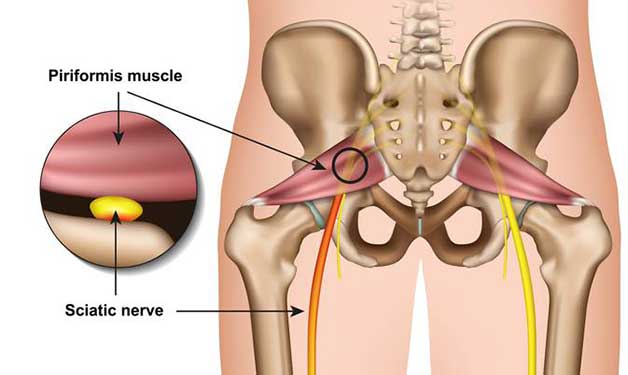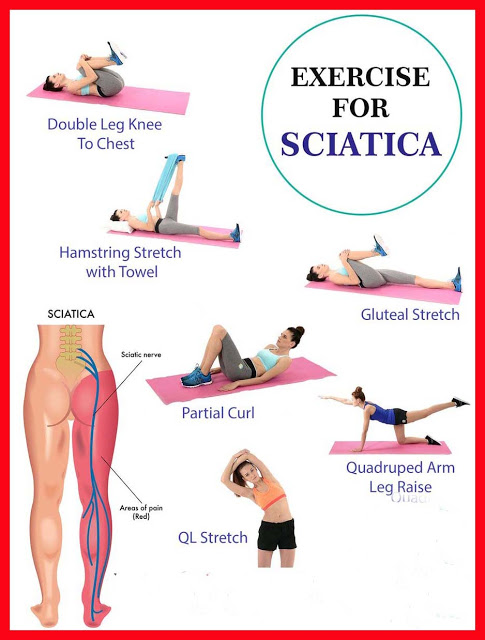Sciatica Pain: Symptoms & Relief

Sciatica is a term used to describe nerve pain in the leg that is caused by irritation and/or compression of the sciatic nerve.
Sciatica originates in the lower back, radiates deep into the buttock, and travels down the leg. The pain may be accompanied by numbness and/or weakness.
Common Symptoms of Sciatica
The symptoms of sciatica may range from infrequent and irritating to severe and debilitating. The symptoms depend on the specific spinal nerve root that is irritated and/or compressed at the origin of the sciatic nerve. One or more nerve roots may be affected together.
While some symptoms are specific to nerve roots, other symptoms are common and occur in all sciatica types.
Sciatica is often characterized by one or more of the following features:
Pain. Sciatica pain may be constant or intermittent. The pain is usually described as a burning sensation or a sharp, shooting pain. The pain is usually more severe in the leg compared to the back. Leg pain commonly occurs more in the calf region below the knee compared to other parts of the leg.
Numbness. Numbness, tingling, and/or a pins-and-needles sensation may be felt at the back of the leg.
Weakness. Weakness may be felt in the leg and foot. A feeling of heaviness in the affected leg may make it difficult to lift the foot off the floor.
One-sided symptoms. Usually, sciatica affects only one leg at a time and the symptoms radiate from the lower back or buttock to the thigh and down the leg. Sciatica may cause pain in the front, back, and/or sides of the thigh and leg.
Posture-induced symptoms. Sciatica symptoms may feel worse while sitting, trying to stand up, bending the spine forward, twisting the spine, lying down, and/or while coughing. The symptoms may be relieved by walking or applying a heat pack over the rear pelvic region.
It is important to note that any type of lower back pain or radiating leg pain is not sciatica. Sciatica is specific to pain that originates from the sciatic nerve.
Common medical conditions that may cause sciatica include:
- A herniated lumbar disc
- Lumbar spinal stenosis
- Lumbar degenerative disc disease, generalized degenerative changes in vertebrae or discs
- Spondylolisthesis
- Muscle spasm and/or inflammation of the lumbar and/or pelvic muscles
- Sacroiliac joint dysfunction
Relieving Pain of Sciatica
The pain may be relieved while walking, applying a heat pack to the rear pelvic area, or doing pelvic exercises.
Treatment for sciatic pain will almost always involve a controlled, progressive exercise program. The exercise treatment helps address, resolve, and prevent recurrences of the underlying cause of pain.
Targeted sciatica exercises serve the following main purposes:
- Reduce acute sciatic nerve pain
- Improve leg mobility and range of motion
- Promote soft tissue healing
- Improve sciatic nerve function
- Provide muscle and soft tissue conditioning
- Prevent, or at least minimize, recurrence of pain


To be effective, therapeutic exercises must be done regularly and as prescribed, using the specific form and program. Close attention to exercise posture and body mechanics is a challenge but is essential for the exercises to be effective.
Without exercise and movement, the back muscles and spinal structures become weak and stiff and less able to support the back. This can lead to further trauma and strain, which can cause additional pain.
Have issues with sciatic nerve pain? Contact us today, we can help!
440-328-8487



